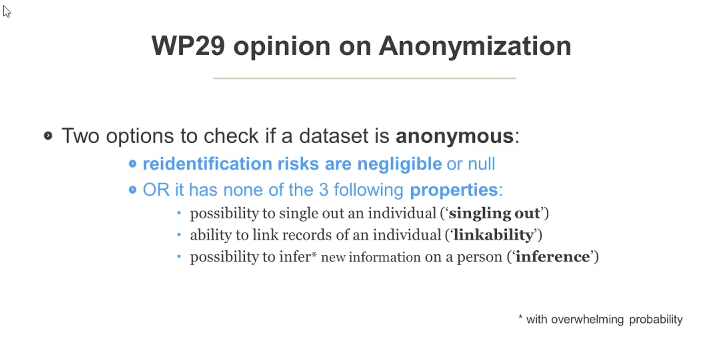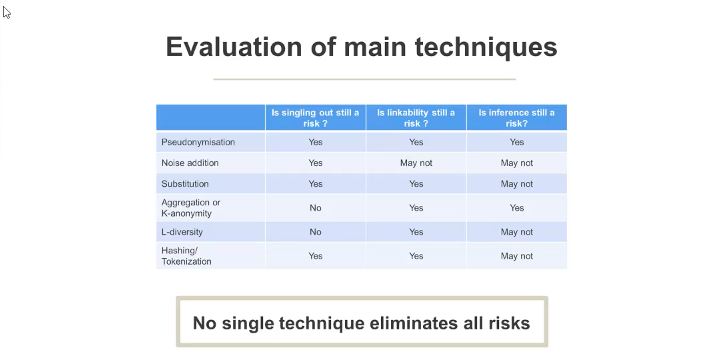Yesterday evening, 29th March 2018 I attended a BCS Law Specialist Group event – GDPR: Anonymisation,re-identification risk and GDPR profiling. The talk was presented by Dr. Amandine Jambert from the French Data Authority CNIL. The anonymisation slide is interesting.
I asked whether the WP29 thinking (& their opinions) about the 3 properties are for the ‘direct and indirect’ way of identification of the personal data. The answer was not in the method itself but that the properties are for ‘all data types’ i.e. any dataset. Her exact wordings ‘ use by anyone on any dataset’. Also, the DPA (DPO/Organisation?) needs to prove (or justify or show) that the dataset has indeed been anonymised (using any of the 2 options). My understanding is that the anonymisation if done (risk-based, database and/or algorithmic-driven) should not enable the direct and indirect re-identification of the individual(s).
As noted on this slide: ‘No single technique eliminates all risks’.
‘No single technique eliminates all risks’.
It’s near impossible to identify/isolate ‘all the direct/indirect re-identification risks’ associated with any dataset, assuming the dataset is available and not hidden in some Cloud and/or in a chain of hidden registers.
We really need to re-think personal data in terms of ‘the harm to individuals’ as there’s no absolutely sure way of preventing re-identification risks (i.e. singling out, linkability or inference/deduction etc.)
Overall a great talk.
I just noticed the slides and talk are available online: BCS Law talk 29th March 2018